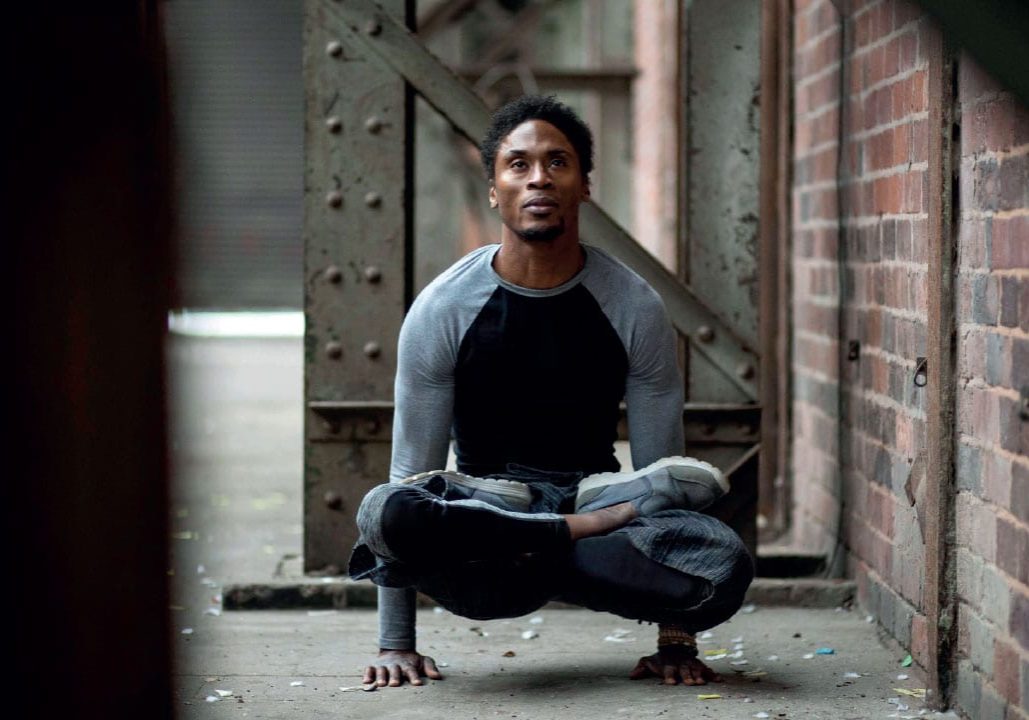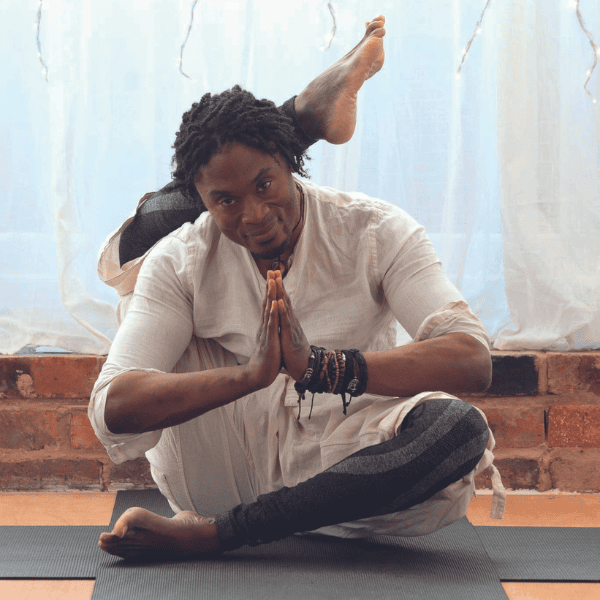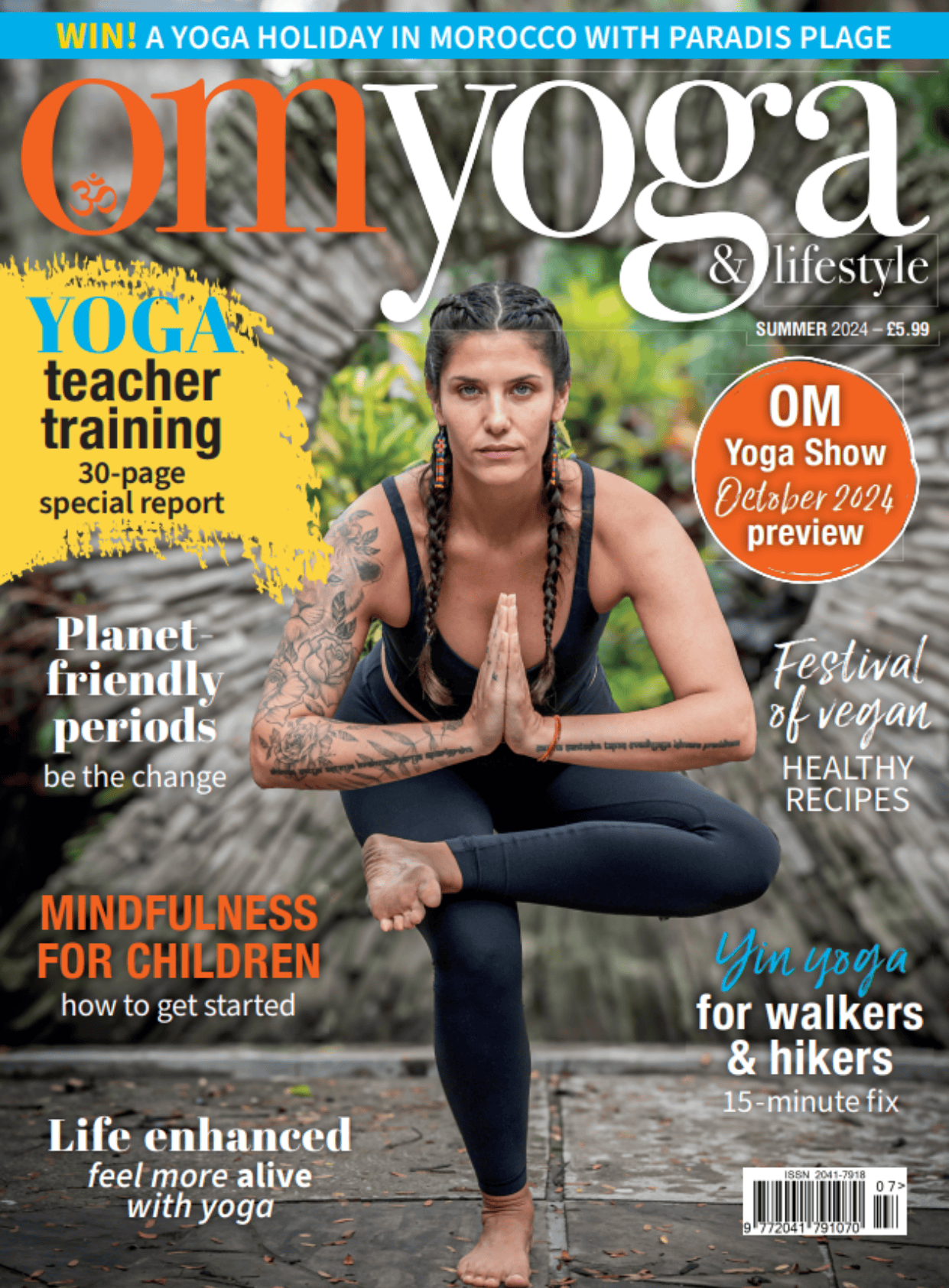
Life Enhanced
With a background in media and martial arts, Richard-Hubert Clarke made yoga part of his life after the practice aided recovery from illness. The founder of Samasthala Yoga, he believes the ancient discipline has the power to unlock a richness and vividness to life that can counter the often numbing mundanity of the modern age
Reading time: 4 minutes
How did you first get into yoga?
The moment our mothers give birth and we scream our first cry, there is a path that we all must walk upon. What that journey entails will be determined by circumstance, opportunities, choices and other factors. Some individuals are natural-born yogis, through an inherent alignment with dharma. The question now is, at what point does a higher level of consciousness help steer them towards alignment with these age-old principles?
From an early age, I always gravitated to philosophies, such as Vipassana, the teachings of Osho and martial arts; there was always an innate sense of familiarity. Though I lost my way at times, these principles often provided an anchoring. I used to practice asana to complement my rigorous martial arts training, but it wasn’t until 2012, when I became ill through a leakage of mercury fillings and was almost bedridden, that I fully utilised yoga, herbal medicine and Ayurveda to assist in my holistic recovery.
What would you say are the biggest benefits of practicing yoga?
Through a yoga practice, there is an enrichment of all things. The vividness and sense of calm one experiences is the advancement toward the ultimate truth that lies within.
What does yoga mean to you now?
This question is so beautifully phrased because of the expansive nature of this wonderful practice. For me, the exploration of yoga begins where asana ends, where it transcends. The aim is to align with a universal truth, an infinite all-pervading consciousness that is the bedrock and enabler of all things.
There are times I touch upon this during Savasana and on rare occasions when I become conscious of the vibrancy of nature. To truly witness, encompass and become one with the beauty of a cherry blossom in the spring, or the mild evening autumn breeze that rustles through the grass and trees. This is yoga.
How has yoga helped you over the years?
It has provided clarity.
How do you stay motivated?
I suppose it is the rigorous discipline of Southern Mantis Kung Fu, from a young age, which I still practice. This style of martial art is sophisticated and requires many hours to master. This has carried over into my asana practice, in where that ‘way of life’ philosophy remains prevalent. It is no longer motivation, but more routine. On most days, this involves an hour of meditation, followed by one or two hours of Kung Fu or yoga and pranayama, and sometimes all three.
What differences have you seen in your practice over the years?
My approach to asana has become a little more conscious. There is a focused stillness aided by a detachment from the mind and emotions. So whatever posture I face, I regard it in the same manner. I approach Eka Pada Sirsasana as I would Dandasana. I try to employ an embodiment of grace, regardless of difficulty or preference. We can apply these tools when off the mat and facing external difficulties.
What type of yoga do you teach?
I would describe Samasthala Vinyasa as a cousin to Ashtanga Vinyasa. The emphasis is a little more on strength and a little less pressure on the hip opening. It is challenging, but rewarding. Yet on the flip side of the coin is the counter-balance. Samasthala Hatha-Yin encourages participants to delve a little deeper, to move inward, whilst moderating the Klesa and Vrittis. This is a marriage of opposites to create a whole. The word Samasthala equates to balance.
Why did you create Samasthala Yoga?
I can only do so much as a yoga teacher. The reach of our yoga teacher training allows for the formation of wonderful teachers around the world. This enables the system of Samasthala to become more widespread and a more common part of the yogic practice.
What can people expect from Samasthala Yoga Teacher Training?
A call to adventure! The 200-hour intensive teacher training allows you to become versed in a true form of yoga. Our team of professionals holds 30 years’ experience and over 20,000 hours of yoga teaching practice. I have carefully selected them to align with the curriculum. The mission is to provide a fulfilling and truthful journey for our trainee yoga teachers. Though we class it as a 200-hour training, people often comment on the depth of the course being more akin to a 300-hour. Our aim is to empower people with the skills to go beyond what you thought would be possible.
How do you raise your own vibration?
Of course, my practice helps. I also spend a lot of time alone, to recharge. I created the Mantra for Samasthala Yoga ‘Rise of the Sun’, which I commit to at the beginning of each class. As the students get ready for Savasana, I chant Om three times. Though these mantras are primarily for the benefit of the yogis, this has a huge positive impact on my spiritual wellbeing and vibrational constitution.
Do you think it’s important to use Sanskrit when you teach?
Absolutely! When you think of the notion that words are sounds, and sounds are vibrations. The resonance of particular sounds holds the power to permeate on a cellular level to enliven our inner being. The word Saṃskṛta has many translations to include ‘purified’ ‘perfection’ and ‘refined’.
This is quite apt for such a wonderful language. It is said that each letter within the Saṃskṛta language, contains a sound frequency with a specific therapeutic benefit; they imbued the entire vernacular with consciousness. By simultaneously saying or hearing the Sanskrit name and performing the pose, we hope to establish a deep connection. There is a transportation back in time, and a feeling of being there, and practicing with the yogis of old. But these are just my thoughts, I don’t expect everyone to follow suit.
What do you do when not doing yoga?
I enjoy watching movies, reading, listening to music and playing the piano on the keyboard. Graduating in media, I have previously pursued careers in both filmmaking and music, as I have a powerful creative streak. Creativity plays a huge part of my Purusarthas ‘four aims of existence’. Currently, I am writing a suspense thriller novel, based on a screenplay that was written some years ago, that will be self-published. It’s almost complete.
What are your plans for the future?
I wish to continue to inspire.
For more information on Richard-Hubert Clarke and Samasthala Yoga visit: samasthalayoga.com





